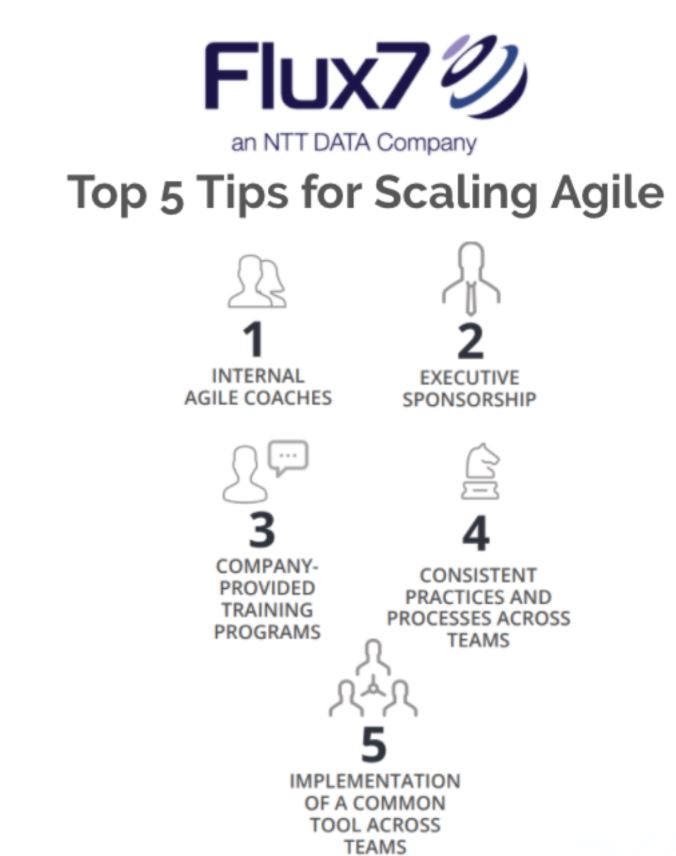Best Practices for Building Agile Cross-Functional Teams
- April 27, 2020
Enterprises are increasingly turning to Agile methods for their ability to help adroitly meet rapidly changing customer needs and expectations. Whether internal or external customers, Agile helps the business focus on continuous improvement that grows the quality of products, services, and other outcomes. By providing a framework for teams to rapidly adjust, the business gets products to market faster and grows customer satisfaction as it meets customer needs in a timely fashion. Yet, successful outcomes require motivated Agile cross-functional teams. Today, we’ll share our insights for identifying ideal team member characteristics that will help ensure Agile teams succeed.
What is a Cross-Functional Team in Agile?
The uninitiated might envision a cross-functional team as individuals from different disciplines who come together to create a team. However, within an Agile framework, cross-functional teams are generally comprised of people who possess multiple skills and in working together are able to accomplish a variety of tasks within a given time period.
We like to look for “T-shaped people” within our teams. T-shaped people have breadth across a number of disciplines while having deeper skills within an area or two. While our teams are comprised of T-shaped individuals, we do have specialists join our teams from time to time, depending upon the project at hand. For example, we are currently working on a project with an Elasticsearch specialist. In these instances, the team needs to recognize that they’ll be limited to specific outcomes in a given sprint. Mike Cohn has additional insights here on aligning specialists within multi-skilled teammates.
One Team: One Goal
Agile cross-functional teams work because they are unified in purpose. Unlike siloed teams which can be caught in a tug-of-war due to conflicting goals, cross-functional teams are driven by a singular objective. This unification allows teams to work in a much more coordinated way allowing them to reach their goal faster while not being beholden to achieving it using one specific path or another. The door to creativity and innovation is opened in the process, helping the business reach its goals faster, with greater efficiency and quality.
Cross-functional Agile teams are also successful as they:
- Welcome and incorporate change in real-time rather than following a plan or schedule made a while back.
- Get regular customer feedback, creating early delivery of value.
- Implement action items from weekly retrospectives, resulting in continuous improvement.
Building an Agile Cross-Functional Team
According to research by Scrum.org, there are two factors to look for in cross-functional teammates: personality traits and values. Beyond the technical skills a person brings to the team, these traits help the team thrive.
Personality Traits
Our Agilists summed up how personality traits contribute this way, “Individuals have a multitude of skillsets, but having the initiative to try new things is paramount because, although there may be a slight struggle, they are enabled to learn and still contribute.” These individuals are able to simultaneously learn and deliver solid product, working as part of a team for the customer. In addition:
- Self-motivation is an important part of being on an Agile team as together, a group of motivated people will strive to complete the project with the greatest quality.
- Humbleness allows the team to shine and gives everyone on the team the opportunity to add value.
- Open-mindedness and a willingness to learn contributes a great deal. Although an individual may not be as tech-savvy as others, that should not exclude them from the team if they show effort and a willingness to learn and be productive.
In addition to these, Scrum.org lists the ability to handle ambiguity, agreeableness, and conscientiousness as key personality traits.

Courtesy of 13th Annual State Of Agile Report, CollabNet VersionOne
Values
Successful teams are comprised of individuals who value:
- Other people’s input and recognize that each person has valuable contributions to make.
- The customer’s perspective, working hard to understand the problem the team is trying to solve.
- Trust among team members. It is only within a trusted environment that accountability is effective.
Scrum.org also recommends teammates who take pride in their product, and are open to change.
Agile First
While having the right team members is important, so is having the right framework and support for the team. According to Harvard Business Review, 75% of cross-functional teams are dysfunctional, failing because the organization lacks a systemic approach. Agile provides a systemic approach with visibility and accountability built-in.
Whether the team adopts Agile as a bottom-up or top-down exercise, its framework provides value through transparency that increases predictability and consistency. It reduces risk while delivering measurable results.
Specifically, we facilitate incremental delivery through weekly sprints where expectations are clearly defined for the nature of work to be completed at the beginning of each sprint. Sprint planning and sprint goals are defined by the team and the team as a whole agrees to them. Within this framework, teams easily recognize everyone’s contribution, holding each other accountable.
Should an issue arise that could impede team progress, an Agilist helps guide the team — with a bias to action. In addition to an internal Agile coach like this, successful teams also have an executive sponsor, consistency in practices and tools, and Agile coaching.
The 13th annual State of Agile report found that 69% of organizations that adopt Agile are better at responding to changing priorities; 65% report enhanced project visibility, and; 64% see better alignment between business and IT. Successful Agile cross-functional teams are able to help their organizations accomplish goals like these as they create a virtuous cycle of collaboration that builds upon incremental work to continuously create customer value.
Subscribe to our blog




